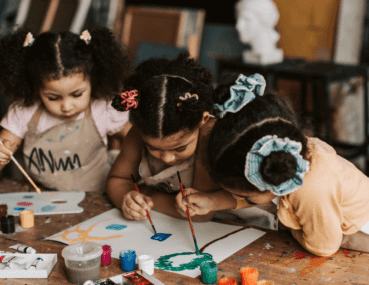
Critical thinking is one of the most crucial life skills to have. It not only builds a strong character but also creates a wise person who is humble and successful. However, only some schools can nurture critical thinking abilities due to a standardized syllabus. Yet, as a parent, you can encourage your children to think critically with some activities you can do at home.
Here are some examples of activities to understand how to teach children critical thinking.

3. Solve puzzles together.
Puzzles are an excellent activity for children to build their neurons. Whether it is Monopoly, Tic Tac Toe, Connect 4, jigsaw puzzles, Shoots and Ladders, or many others, your child will actively build their critical thinking skills by playing these games.
Through puzzles and brain teasers, your child slowly learns how to formulate strategies, understand the fundamentals of game theory, and gradually build up these skills until it is second nature.
Your presence is also significant when it comes to puzzles. These puzzles might seem daunting and unenjoyable if you let your child play alone, but playing together can become a fun and wonderful bonding experience.
4. Real problems, pretend play.
Bring a real-world problem, such as world hunger or global warming, to pretend play and ask the kids to think of solutions. For example, if they were the president of the United States of America, how would they solve these issues? Such critical thinking games allow kids to learn about their surroundings and be aware of their environment while critically thinking about the issues and how to work around them.
These games also allow your children to understand the real challenges that people in the world face. Through your encouragement, you can motivate them to not only think heavily about these problems but also actively think of solutions, which might benefit their future careers and ideologies.

5. Play with building blocks.
Building blocks and LEGOs are great toys for building critical thinking skills. The endless possibilities allow your child to let their imagination loose. By creating various things with them, you encourage them to utilize more of their brainpower to bring their ideas to life. From dinosaurs and buildings to spaceships and model homes, as your child builds their imaginations into reality, they actively fire up those neurons throughout the process.
You can also achieve outstanding results by playing Minecraft with them. Essentially a virtual world made out of building blocks, you and your child have a great bonding experience that is both fun and educational. If Minecraft isn’t your thing – programs like Engineering For Kids® encourage creativity and critical thinking in their STEM camps, classes, and events.
Critical thinking is the key to success
Critical thinking abilities are crucial for achieving success in life. They allow individuals to live life to the fullest and always think ahead of their actions and the consequences that will come. By nurturing critical thinking skills in your children, they will undoubtedly have a bright future ahead.
Enroll your child in an Engineering For Kids® program today and watch them develop the critical thinking skills they need for a successful future!




